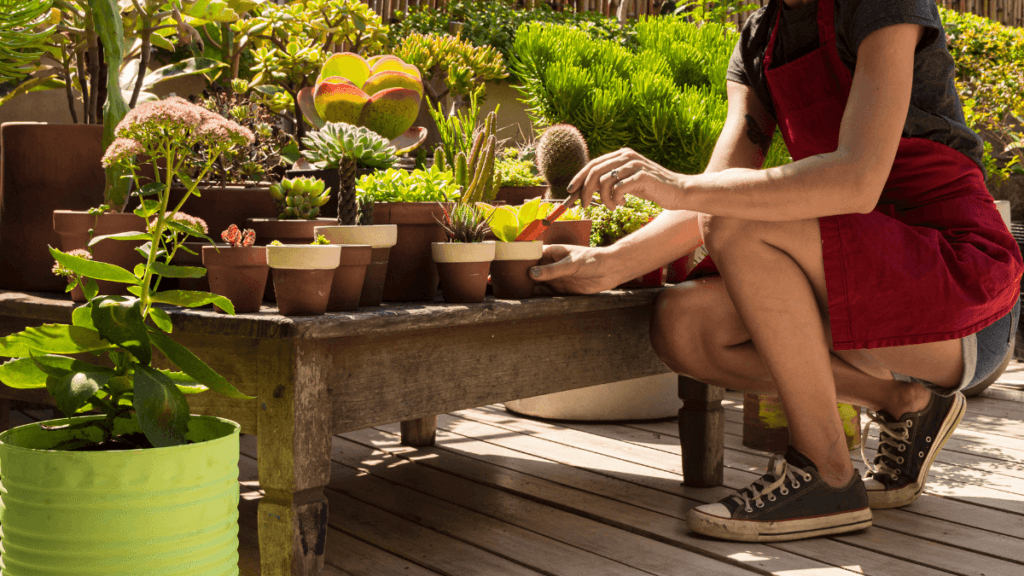Growing your own vegetables at home is not only rewarding but also a great way to save money on your grocery bills. Creating a backyard vegetable garden doesn’t have to be expensive. With a bit of planning, resourcefulness, and a willingness to get your hands a little dirty, you can build a productive and sustainable garden on a budget. Here’s how to get started on creating your very own low-cost vegetable garden.
1. Choose the Right Location
The foundation of a successful vegetable garden starts with choosing the right location. The spot should receive at least 6 hours of sunlight every day, as most vegetables require full sun to thrive. A sunny area will help your plants grow strong and healthy. Additionally, consider the proximity to a water source. Having easy access to water will make it more convenient to keep your plants hydrated, especially during hot summer months.
Another important factor to consider is soil drainage. The garden area should have good drainage to prevent water from pooling around your plants’ roots. Poor drainage can lead to root rot, which can kill your plants. Avoid low-lying areas or places where water tends to collect.
2. Prepare the Soil
Once you’ve selected the perfect location, it’s time to prepare the soil. This step is crucial to ensure your vegetables have a healthy environment to grow in. If your garden area has grass or weeds, you’ll need to remove them. You can do this manually by using a flat-bladed spade or a sod cutter if available. If you’re working on a small plot, this should be manageable.
Next, you’ll want to loosen the soil. You can do this with a spading fork or a shovel. Breaking up compacted soil allows for better root growth and improves drainage. Make sure to remove any debris like rocks or roots that might obstruct plant growth.
To improve the texture and fertility of your soil, mix in organic matter such as homemade compost, leaf compost, or store-bought compost. If you want a quick fix, spread about one inch of compost over the soil and rake it in evenly. This will provide essential nutrients to your plants and enhance the overall health of the soil.
3. Use Budget-Friendly Garden Beds
You don’t need to spend a fortune on fancy garden beds. There are several budget-friendly options available to help you set up a garden without breaking the bank. One option is to plant directly in the ground. This is the simplest and cheapest method, as you’ll only need to prepare the soil and plant your seeds.
Alternatively, you can build simple raised garden beds. You can use untreated wood, which is inexpensive and readily available. If you don’t have access to wood, consider repurposing old containers or sandboxes for planting. Raised beds are ideal for areas with poor soil quality or limited space, as they allow you to control the soil conditions more easily.
Another low-cost gardening method is called “lasagna gardening.” This technique involves layering organic materials, such as leaves, grass clippings, and compost, on top of the lawn. Over time, these materials break down and create nutrient-rich soil for your plants. It’s a no-till gardening method, which is simple and easy to set up but requires patience as the layers decompose.
For smaller spaces, container gardening is also a great option. You can use old buckets, pots, or any container with good drainage. Container gardening allows you to grow vegetables even if you have limited space, and it’s an affordable way to start gardening.
4. Select Easy and Cost-Effective Vegetables
When choosing vegetables for your vegetable garden, it’s important to start with varieties that are easy to grow and affordable. Growing from seeds is much cheaper than buying established plants, so opt for seeds when possible. You can sow seeds indoors early in the season and transplant them into your garden once the weather warms up, or plant them directly in the ground as per the instructions on the seed packets.
Some beginner-friendly vegetables that are simple to grow and inexpensive include lettuce, spinach, beets, carrots, beans, cucumbers, tomatoes, radishes, and herbs. These vegetables don’t require a lot of space and will grow quickly, allowing you to enjoy a bountiful harvest without much hassle.
Before selecting your plants, consider what your family enjoys eating. Growing vegetables you love will help prevent waste and ensure that you’ll make the most of your garden’s yield.
5. Plant and Maintain Your Garden
Planting your vegetables correctly is key to their success. Follow the spacing guidelines on the seed packets or plant labels to avoid overcrowding, which can stunt growth. After planting, water your garden well to help the seeds or seedlings settle into their new environment.
To save on water and reduce the effort involved, use a soaker hose or drip irrigation system. These systems target the roots directly, reducing water waste and keeping the soil consistently moist. Try to avoid overhead watering, as this can encourage disease and water waste.
Support your plants when necessary. Use stakes or trellises for vining plants like tomatoes or cucumbers. This not only helps your plants grow upward, saving space, but also prevents damage from wind or rain.
Be sure to regularly check your garden for pests and diseases. Early detection and natural pest control methods, like using companion plants or organic insecticidal soap, will help keep your garden healthy.
6. Utilize Free or Low-Cost Resources
Vegetable Gardening doesn’t have to be expensive, and there are many ways to source materials for little to no cost. For instance, many local municipalities offer free compost to residents, or you can start a compost pile at home to create your own.
Networking with neighbors and local gardening groups is another great way to find free or low-cost resources. You can exchange seeds, starter plants, or gardening tools. Not only will this save you money, but it’s also a great way to learn new gardening tips from others in your community.
Recycled materials, such as wooden pallets or plastic bottles, can be repurposed for building garden structures like trellises or plant supports. Be creative and think outside the box when sourcing materials for your garden.
Check also: Starting a Small Vegetable Garden at Home to Save on Groceries
Starting a vegetable garden in your backyard doesn’t need to be a costly venture. With a little bit of time, effort, and creativity, you can build a productive and sustainable garden on a budget. By following these simple steps, you’ll soon be harvesting fresh, homegrown vegetables without breaking the bank. Happy gardening!










